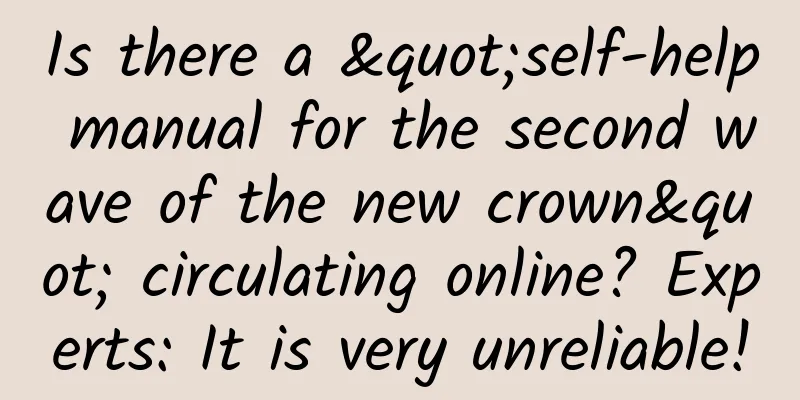Reality is your brain's best guess

|
© Brain Latam Leviathan Press: We often joke about "brain supplementation", which is actually a great way to describe brain prediction. Let's take a simple example. For example, if you hear someone talking on the other side of the wall, but you can't hear clearly, only some intermittent words, then your brain will use this basic information to make reasonable predictions based on language habits. Of course, the reasonable predictions mentioned here do not mean the facts themselves, and may even be completely wrong - just like when we hear a noise in the bushes in the forest, we will instinctively predict that the person coming is not good, and be alert and ready to escape/fight at any time, even if nine out of ten times it is a deer that comes out. All of this reminds us that our perception is not as clear and independent as we once believed: it affects our understanding and thinking about the world, but it is also influenced by our existing knowledge and ideas. Andy Clark admits that it was a bit strange for him to accept an ambitious theory of how the brain works, called predictive processing. A philosopher of mind at the University of Sussex, he has devoted his career to studying the mechanics of “thinking” – how it happens not just between our ears, but also flows between our bodies, tools and environment. "The external world is part of our cognitive machinery," he said. But 15 years ago, he realized that research had to return to the center of the system: the brain. He discovered that predictive processing provides the necessary link between the brain, body, and world. Clarke lays out the theory in his new book, The Experience Machine: How Our Minds Predict and Shape Reality , which is notable because it connects high-level concepts to everyday examples of our brains making predictions, exploring how this process can lead us astray and what we can do about it. I recently spoke with the personable Clark about our predictive brains. He explained everything from the causes of chronic pain, why we are easily misled, and how affirmations can actually help you improve your golf game. Clark's insights are as colorful as the shirt he wears. Anticipating birdies: Philosopher and cognitive scientist Andy Clark says he improved his golf game by learning to predict when he was about to hole a putt, with coaching. © The New Yorker —— Can you summarize what "predictive processing" is? —— At least since Descartes, the traditional view has been that perception is the impression of the external world on the sensory organs. In the fields of artificial intelligence and neuroscience in the 20th century, vision was defined as a feedforward process in which you receive pixel-level information, refine it into a 2.5-dimensional sketch, and then refine the sketch into a complete model of the world. But in predictive processing, perception is structured around predictions. Perception is the brain’s best guess about the outside world and then uses sensory information to refine that guess. In the past 15 to 20 years, largely through the work of Karl Friston,[1] this account of perception has exploded into an account of perception, action, planning, and emotion. Perhaps this is how the brain works in its entirety. If you ask what the purpose of a predictive brain is, the answer must be: to stay alive. As a physical organism, a predictive brain is how you keep yourself within your viability envelope: you get food when you need it, you get water when you need it. You can't let your energy resources degrade to the point where you can't go out and eat more to get more energy. As Lisa Feldman Barrett points out in her work[2], we begin to feel hungry and thirsty before our body’s resources have reached that level. Similarly, if you feel thirsty and take a sip of water, you will immediately feel that your thirst has been relieved, but in reality, it takes about 20 minutes for the true biological quenching of thirst to occur. Just now you were thirsty prematurely, now you are quenched prematurely, that's how it works. —— If artificial general intelligence does emerge, will it also require the introduction of such mechanisms to assist its survival, or require some equivalent to physical fragility? —— I agree that being forced to stay within the envelope of our survival is essential for the kind of intelligence we know and have, and so I think anything like an artificial general intelligence system will also have this property. I think another important element, which is not present in generative AI like ChatGPT, is artificial curiosity. Predictive processing systems are naturally curious. They are set up in such a way that they can predict their own living conditions and always try to eliminate prediction errors; but if they have solved all practical problems and there is nothing else to do, then they will explore. It's a good thing for them to eliminate any mistakes. If you were that kind of creature, you'd be a very good learning system. You'd be happy to live in an environment where you can learn the most, where the problems are not too simple, not too complex, but just right. —— What are some examples of how we become aware of our own predictive mechanisms in our daily lives? —— Our expectations change how we experience and perceive the world. The blue, black, white, and gold dress is a very interesting example. Suddenly, people realize that there are many differences hidden in perceptual experience. © Wikipedia We all have different predictions about the light source when the “blue, black, white, and gold dress” was photographed, which is instilled in us by different life experiences. If you think the light source is artificial, you will tend to think the dress is blue. If you think the light source is sunlight, you may think it is more like white. Even when new evidence emerges, we often don’t change our views. © The Daily Beast "Ghost vibrations" on your phone are another great example. If you carry your phone around in your pocket, at some point you may have felt it vibrate when it wasn't. Your body is constantly moving and changing; sensory signals are always fluctuating. My brain picks up on a very small thing and interprets it as a vibration of my phone. It's a clear and convincing sensation. It's so intense that it's like my phone is actually vibrating in my pocket. This seems to happen with chronic pain, too—an otherwise harmless bodily signal can be mistaken for evidence of physical damage. While there was once a standard structural cause for your pain experience, over time that structural cause has likely faded, and the pain you experience should have decreased in intensity. But somehow the system has become locked into predicting the earlier pain intensity. We are like sponges that are sensitive to statistics. If the predictive brain is right, then everyone’s experience will be different, reflecting their unique life experiences. My colleague Anil Seth is conducting a study called the Perception Census[3], in which he asks people to take some tests online to explore the possibility that there is a lot of undiscovered variation in human experience. I think predictive processing will end up giving us something like a “periodic table of empirical differences”: all the neurotypical cases, all the neuroatypical cases, and everything in between, plus all the variations within the typical and atypical cases. It only takes a small number of basic elements—model-based predictions, their precision, and the flow of prediction error signals—and different combinations of them to produce all these different empirical profiles. —— To enrich and complete the above examples, how should the most serious and tragic cases such as psychosis and schizophrenia be understood in a predictive framework? —— Schizophrenia is a big label, but at its core, Chris Frith and Paul Fletcher argue that the prediction mechanism is broken . © Apollo Hospitals Blog Imagine that for some reason, prediction errors are being generated incorrectly. At first, the world will seem a little strange to you—you’ll have a palpable sense of strangeness. The brain has to find a model that accommodates these errors. And because these errors are generated chaotically, any model is possible: controlled by aliens, controlled by technology companies, controlled by the Internet. You might start to find “evidence” that falsely confirms this model. If you think you’re being manipulated by the Internet, you might find some particularly conspicuous information on the Internet. Even when new evidence comes in, they often don’t change their minds. But it’s understandable why they’re not swayed by this evidence, because to them, it’s not evidence at all. They have numerous strategies for reinterpreting it in a way that fits the model—this is called cognitive immunity. This effect can also be seen in research on pain by Marieke Jepma et al. [4]. They found that if you anticipate strong pain, then the signal you get is interpreted as more painful than if you don't, and vice versa. Then they asked, why don't you correct your misperception? If my expectation of pain is what makes it feel more painful, why don't I get the prediction error to correct it? © Tenor The reason is that there is nothing wrong with the prediction. You expect a certain level of pain, and your prediction contributes to that level of pain; there is nothing to correct. In fact, you get confirmation of your prediction. So it can be a vicious cycle. —— Do you think this self-fulfilling cycle of mental illness and pain perception helps explain our society and why people are susceptible to accepting misinformation in certain stories? —— Of course. We all have these weaknesses and self-fulfilling loops. We tend to see things that support our existing models because that’s how we tend to judge whether information is correct or not. —— Now that we know we are susceptible to self-fulfilling information loops, how can we ensure that we don’t fall into blind faith in a belief? —— Unfortunately, this is really hard. The most effective intervention is to remind ourselves that we sample the world as guided by our existing models. The structures of science exist precisely to counter our natural tendency to be selective. © Wikimedia Commons —— Armed with this self-awareness, what other ways do we have to hack our own predictive mechanisms? —— Pain-reprocessing therapy works well for many people. When chronic pain sufferers receive the body’s warning that “you are about to hurt your body in some way, stop!” they can start to think of it as a false pain signal, not an important one. It’s the warning light that’s broken, not your car’s engine. When people treat pain as a warning light for a malfunction and convince themselves that it is, this creates a corresponding feedback loop because they are getting evidence that disproves their prior model. This seems to reduce the pain they experience. Overturn a misplaced prediction and allow the true prediction to surface. The placebo effect is another example.[5] You are told that something will relieve your pain, and in many cases it may have the same intensity of effect as an opioid. But interestingly, you may need to be trained to make the placebo work. © VOX There's a specific Parkinson's drug called apomorphine. Once you've trained someone's brain to know what the body is going to do when they take apomorphine, then a placebo of apomorphine can elicit those responses. Just telling you, "Hey, this is good for Parkinson's" is not going to elicit those responses. You need to have trained the brain to predict the right set of physiological responses. —— So doctors can give a drug, then withdraw it and replace it with a placebo? —— That's right. If you start with a placebo, it's not going to work. —— In The Experience Machine, you suggest that self-affirmation can work wonders. That sounds a little vague. How does it work wonders? —— If you overturn misplaced predictions, it's not surprising. Your self-predictions may be based on some misplaced social beliefs. You have to overturn a misplaced prediction in order for the true prediction to surface. This self-affirmation exercise may take six months. If you just say to yourself "I'm really good at this" before a test, the effect you get is usually not as good as the exercise I'm talking about. It's not just about affirming the end point of the action, the result: "I'm really going to ace this test." It's about the trajectory of the action—the flow of feelings or behaviors that make up success. So you have to learn what it feels like to do something right . Then, recreating that feeling brings about the behaviors that constitute “doing the one thing right.” This approach doesn’t work if you don’t have the right skill set. I play a little golf. If you're putting, you have to know how to putt and then say to yourself, "I'm going to make this putt" for it to work. For a long time, I only knew how it felt to make a bad putt. If you know how it feels to do something wrong, then you predict that feeling, which forces you to keep doing it wrong. You learn from your mistakes. © Business Insider At some point, someone taught me a different way to grip the club, and it taught me the right feeling—a sense of stability that I had never known before. Specific cues or instructions can artificially put your body in a position to experience the right feeling, and from that point on, you can continue to improve in a robust, repeatable way. —— How did you continue to expand on these ideas? —— What I’m most excited about right now is understanding how our predictive brains improve themselves over time as cultures evolve. We’re trying to explore this using the archaeological record, vision science, and more. At some strange moment in prehistory, human creativity suddenly exploded, and it seems that there had been no similar thing for a long time before that. Perhaps there was a material externalization that helped us to start all this. When we write something down, draw a picture, or make a sculpture, our thoughts become something we can think about. And thinking about thinking is a characteristic of human beings. References: [1]www.mdpi.com/1099-4300/22/5/516 [2]nautil.us/that-is-not-how-your-brain-works-238138/ [3]www.anilseth.com/perception-census/ [4]pubmed.ncbi.nlm.nih.gov/31558818/ [5]www.ncbi.nlm.nih.gov/books/NBK513296/ By George Musser Translated by Kushan Proofreading/Lean Bamboo and Bean Curd Original article/nautil.us/reality-is-your-brains-best-guess-312269/ This article is based on the Creative Commons License (BY-NC) and is published by Kushan on Leviathan The article only reflects the author's views and does not necessarily represent the position of Leviathan |
>>: These 5 risk factors can cause cells to become cancerous! To prevent them, try this →
Recommend
Big data public opinion analysis: a comprehensive interpretation of "Wolf Warrior 2"
Last month, I went to the cinema and saw that Wol...
10 thoughts on live streaming sales
" Live streaming with goods " should be...
Small size, big heart - Tsinghua Tongfang M770 business computer review
For small and medium-sized enterprise users, the ...
If 7nm is the physical limit of the manufacturing process, then what is the concept of 1nm?
Moore's Law, which has been applicable for mor...
WeX5 cross-terminal mobile development framework V3.2 official version released
WeX5 Enterprise Rapid Development Platform V3.2 O...
Explain Xiaohongshu's policies of focusing on attention, optimizing efficiency and co-creating recruitment in one go!
Recently, my friends have been asking about their...
How to quickly acquire users in a short period of time at zero cost?
This time I want to share how product operations ...
How much does the new coronavirus vaccine cost? How will the price of the new coronavirus vaccine be determined in the future?
What is the price of the COVID-19 vaccine? How wi...
How to install Windows 10 on your Mac
Many people like Apple's notebook products, w...
Lei Zi Doudian no source 3.0 upgrade practical gameplay
Douyin course catalog: Lesson 1: Ideas and core es...
Candles are actually insect secretions? Uncovering the ancient tree "factory" that produced candles
Why is the wax in “烛” (candle) written with the c...
Brand marketing: 3 ways to make your brand younger
Brand rejuvenation is one of the buzzwords in the...
Do you remember the "sour soup" incident? To prevent fumonisin poisoning, be sure not to eat this kind of food
What was originally a wonderful dinner for relati...
What are the shooting techniques for Tik Tok short videos? Vertical shooting techniques for Tik Tok short videos!
Many people asked me how to do traffic matrix man...
In-depth analysis of information flow, splash screen, and incentive video advertising!
Mobile advertising comes in many forms. For mobil...









